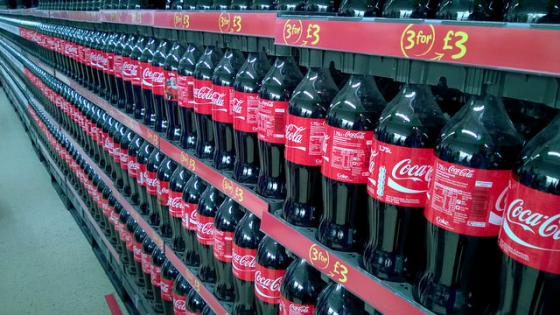Governments around the world try to reduce the consumption of ‘sin goods’ such as tobacco, alcohol, and sugar-sweetened beverages by levying taxes on them. The extent to which these taxes are passed through to consumer prices and their impact on consumption have been well studied (Griffith et al. 2018, Loewenstein and Galizzi 2016; see for example, Bonnet and Requillart 2013, Wang 2015, Allcott et al. 2019, Dubois et al. 2020, Seiler et al. 2021, O’Connell and Smith 2023.
Firms are likely to also adjust other strategic choices, such as advertising, in response to a tax. Advertising can affect product demands both contemporaneously and into the future, so this means that the introduction of a tax can have dynamic effects on the market equilibrium. With many sin goods, such as tobacco and alcohol, governments have also implemented restrictions to advertising in conjunction with taxes (Griffith et al. 2017, Saffer et al. 2018; see for example discussion of the tobacco industry in DeCicca et al. 2022).
In recent work (Abi-Rafeh et al. 2023), we study the impacts of a tax on sugar-sweetened beverages, widely known as soda taxes, in an empirical equilibrium model that incorporates dynamics arising through brand-level advertising. There is little work that studies the interactions of taxes and advertising restrictions, or that accounts for the possibility that firms re-optimise advertising expenditures in response. The market for sugar-sweetened beverages is one where these considerations are relevant. Taxes that aim to reduce consumption (due to its association with obesity and diet-related disease) have been implemented in many jurisdictions – as of April 2021 over 50 jurisdictions had introduced taxes on soft drinks (see Global Food Research Programme 2021) and restrictions on advertising are increasingly being considered.
The UK cola market has two dominant firms – Coca-Cola and Pepsico – and a few lower-quality, cheaper store-brand (i.e. private label) alternatives. Both Coca-Cola and Pepsico advertise, while store brands are not advertised. Television advertising accounts for the highest share of advertising spending in the cola (and broader food and drinks) market.
One of the major challenges in estimating a dynamic equilibrium model of firm competition – which allows us to study the impact of counterfactual policies, such as taxes and advertising restrictions, on pricing, advertising, consumption, and welfare – is the large dimensionality of the firms’ action space (the strategic choices they make). For example, in an average month, there were over 9,000 Coca-Cola adverts shown on television (over the period 2009–2016). It is empirically intractable to model choices over the timing and channels of each advertising slot.
We exploit the intermediary role that advertising agencies play in choosing advertising slots. This is an institutional feature of the UK television advertising market (see Crawford et al. 2017) and is common to other advertising markets. Coca-Cola and Pepsico decide their monthly advertising budgets and delegate to an advertising agency the task of choosing specific slots to maximise the exposure of consumers to their advertising. This provides a link between the rich variation in advertising exposure of consumers and drinks firms’ strategic decisions over total monthly advertising expenditure. The agencies simplify the dynamic advertising game played by the firms, reducing their action space from being highly multidimensional (entailing choices over the timing and channels of each advertising slot, given advertising prices and their expectations over viewing behaviour of consumers) to a decision over total monthly expenditure, which makes solving Coca Cola and Pepsico’s intertemporal profit-maximisation problems feasible.
Firms’ decisions over product prices and brand advertising levels depend on how sensitive demand for their products is to these choices. We use rich longitudinal micro data on the consumption choices of UK households over the period 2010–2016 to estimate demand for cola products, as well as outside options that capture non-cola drinks consumption. The purchase data indicate the disaggregate barcode-level products that households choose (including the transaction price) and also contain detailed information on household television viewing habits.
Coupled with data on the universe of UK television adverts, which include details of when, on what channels, and during which programmes specific brands were advertised, we construct household-specific measures of exposure to brand-level advertising. We use variation in exposure across households of the same demographic make-up and that have the same television viewing habits (across genres, times and channels) to identify the impact of brand-level advertising exposure on consumer demands. This variation arises because there are differences in brand advertising across similar shows, meaning households of the same income, composition, and television viewing preferences are exposed to different levels of brand advertising.
Our demand estimates show that there is a correlation in consumer preferences over price and advertising; on average, consumers that are particularly sensitive to price also tend to be relatively more sensitive to advertising. We also see positive spillovers in brand advertising. For instance, the own-advertising elasticity for Regular Coke is 0.12, while the cross-advertising elasticity of (demand for) Diet Coke is 0.05 and Regular Pepsi is 0.02. In other words, as well as raising demand for Regular Coke, Regular Coke advertising stimulates demand for Diet Coke and (to a lesser extent) Pepsi. These features of consumer demands play an important role in driving advertising responses to policy changes.
We model the decisions firms take each month over their prices and brand advertising expenditures, given the shape of consumer demands and their expectations about how advertising expenditures map into exposure via the role played by advertising agencies. Firms’ decisions over prices depend on the distribution of consumers’ stock of exposure to brand-level advertising, meaning that optimal prices are a function of past advertising choices. Firms’ decisions over advertising budgets depend on how prices and demand for their products in the future will be affected by current advertising. Therefore, competition over advertising budgets is dynamic.
Our results suggest that the introduction of a sugar-sweetened beverage tax leads firms to reduce advertising of taxed products. A key reason for this is the correlation in consumer price and advertising sensitivities, which means that a tax leads the most advertising-sensitive consumers to switch away from taxed brands, lowering the incentive firms have to invest in advertising.
The reduction in advertising is larger under an ad valorem tax (a tax that is a percentage of price) than under a specific tax (a tax that is per unit volume). This is driven by the fact that the ad valorem tax reduces firms’ optimal price-cost margins, thereby reducing the profitability of the marginal consumer, which lowers firms’ incentive to advertise taxed brands. In contrast, a specific tax leads to a slight increase in firms’ optimal price-cost margins.
Both a tax and a restriction on advertising sugar-sweetened brands lead to reductions in advertising of diet brands. This is driven by a within-firm complementarity in advertising strategies – the lower the advertising of taxed, sugary products, the lower the return to advertising diet products – which is in part driven by our finding that brand advertising has positive spillovers to the demand for other cola brands.
Overall, the results suggest that an advertising restriction, if implemented on its own, will have a relatively small impact on total sugar consumption from drinks (-2.7%). In contrast, taxes of the scale that have been implemented in practice around the world have a much larger impact (reducing sugar consumption by around 16.5%). If an advertising restriction is implemented on top of a tax, its impact on sugar consumption is small, in part because the higher prices resulting from the tax already drive away the most price- and advertising-sensitive consumers.
The taxes appear regressive, as the consumer surplus loss resulting from higher prices is larger for low-income households; however, this is offset by larger sugar reductions among low-income households. Based on internalities from sugar consumption of the scale estimated by Allcott et al. (2019), the reduction in internalities achieved by the tax is broadly enough to compensate consumers (including for each income quartile) for the consumer surplus loss due to higher prices.
References
Allcott, H, B B Lockwood, and D Taubinsky (2019), “Regressive sin taxes, with an application to the optimal soda tax”, Quarterly Journal of Economics 134(3): 1557–626.
Bonnet, C, and V Requillart (2013), “Tax incidence with strategic firms in the soft drink market”, Journal of Public Economics 106: 77–88.
Crawford, G, L Deer, J Smith, and P Sturgeon (2017), “The regulation of public service broadcasters: Should there be more advertising on television?”, CEPR Discussion Paper 12428.
DeCicca, P, D Kenkel, and M F Lovenheim (2022), “The economics of tobacco regulation: A comprehensive review”, Journal of Economic Literature 60(3): 883–970.
Dubois, P, R Griffith, and M O’Connell (2020), “How well targeted are soda taxes?”, American Economic Review 110(11): 3661–704.
Global Food Research Programme (2021), “Sugary drink taxes around the world”, Global Food Research Program, University of North Carolina.
Griffith, R, M O'Connell, and P Dubois (2017), “The effects of banning advertising in junk food markets”, VoxEU.org, 31 March.
Griffith, R, M O'Connell, and P Dubois (2018), “Soda taxes target the young but not individuals with high sugar diets”, VoxEU.org, 29 January.
Loewenstein, G, and M Galizzi (2016), “The soda tax as a measure for sustained change in consumption”, VoxEU.org, 14 June.
O’Connell, M, and K Smith (2023), “Optimal sin taxation and market power”, American Economic Journal: Applied, forthcoming.
Saffer, H, D Kenkel, D Dench, M Grossman, and D Dave (2018), “Should electronic cigarette producers be prohibited from advertising and be taxed?”, VoxEU.org, 5 May.
Seiler, S, A Tuchman, and S Yao (2021), “The impact of soda taxes: Pass-through, tax avoidance, and nutritional effects”, Journal of Marketing Research 58(1): 24–49.
Wang, E Y (2015), “The impact of soda taxes on consumer welfare: Implications of storability and taste heterogeneity”, RAND Journal of Economics 46(2): 409–41.





